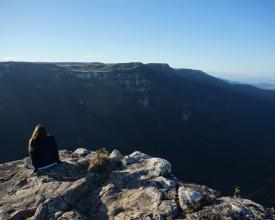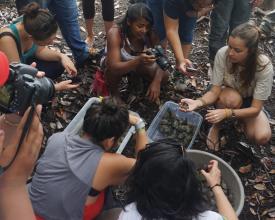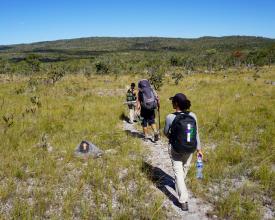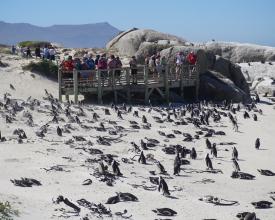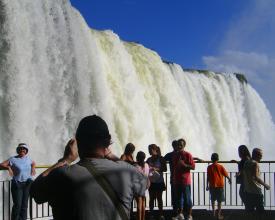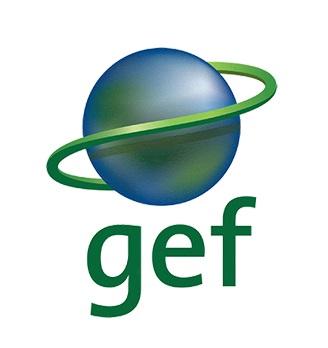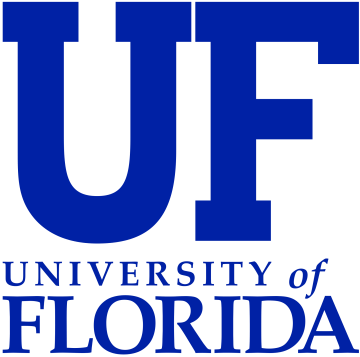
Assessing Economic Impacts of Visitor Spending in Protected Areas of Brazil
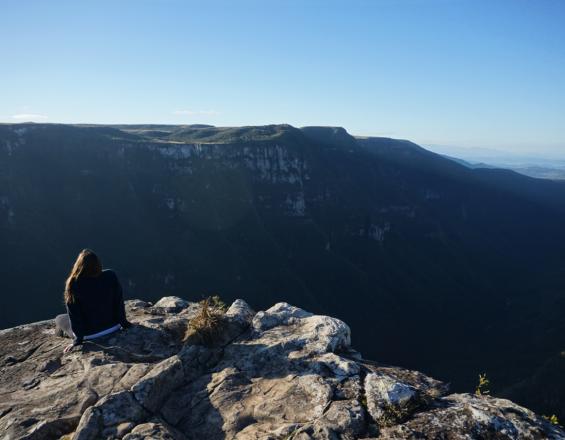
Assessing economic impacts of tourism in protected areas (PA) provides a way for park managers of developing countries to inform stakeholders of the value of PAs in serving not just for conservation purposes, but as engines for relatively low-impact, high added-value economic growth.
An analysis of the economic impact of tourism was developed to measure visitor spending around PAs in Brazil. The study revealed the economic magnitude of an important ecosystem service provided by PAs – tourism and outdoor recreation. Visitation at PAs demonstrated to be an impactful mechanism to develop local economies and the tourism industry in Brazil as each dollar invested in management generates $7 for the economy. The initiative reinforced that economic impacts of tourism influence directly the PAs, as well as indirectly other businesses and the local communities, generating greater economic benefits for local communities that have a higher household dependency on the surrounding natural resources.
Contexte
Challenges addressed
Protected areas (PAs) may contribute significantly to local economies through trip-related visitor spending on goods and services, indirect supply-chain spending, economic activity induced by the presence of the PA, and park operations. However, in general, PA agencies are more accustomed to financial reports which deal only with direct income (from gate fees, concessions, resource royalties, etc.) and costs, while failing to consider the wider scope of monetary value generated by PAs for local, and the larger provincial and national economies. Despite the fact that visitation is a major source of income to PAs, by ignoring the larger contribution to a regional economy, financial analyses can mislead decision makers and the general public.
Emplacement
Traiter
Summary of the process
The building block show the process to develop an analysis of economic impacts of visitor spending in protected areas.
The first building block explains that agencies that manage protected areas are accustomed to producing financial reports which deal with direct income and costs. It is necessary to identify the problem that narrow financial analyses significantly under-value the areas in the eyes of decision-makers and the general public compared to the larger economy effects for regional economies, which often amounts to many times the direct costs of running the protected areas.
In order to address this issue, the second building block offers a assessment tool called Tourism Economic Model in Protected Areas (TEMPA) that help guide project managers and others to develop Economic Analysis through the collection, analysis and display of tourism spending data at local and national level.
The third building block describes how to use the tourism economic data for reporting and influencing decision-making. The main objective of tourism and recreation economic reports is public relations, increasing society support, raising PA budgets, building partnerships, and influencing local policies and planning decisions.
Building Blocks
Identifying the problem: Conducting economic instead of financial analysis
Agencies that manage national parks are accustomed to producing financial reports which deal with direct income and costs (including gate fees, concessions, resource royalties, etc.). However, this perspective fails to consider the wider economic effects of protected areas (PA), including their monetary value and the employment they generate for regional economies, which often amounts to many times the direct costs of running the park.
Brazil manages a system of 334 federal PAs in a total of 170 million hectares. Despite the enormous size of the PAs system along with its important biodiversity, the associated budget has not been fully substantiated in Brazil. Additionally, it was still ambiguous with respect to the impact and value added of tourism via visitors’ spending due to lack of empirical research. Therefore, the purpose was to estimate the economic impacts of tourism in the federal system of PAs of Brazil.
Enabling factors
Economic impact analysis describes the interrelationships between economic sectors. For example, visitors spend money in PAs and gateway communities, and their expenditures create and support local economic activity.
Economic Analysis demonstrates the contribution of PAs to national and local economies through visitor spending on accommodation, transport, goods and services during their visit, indirect supply-chain spending, economic activity induced by the presence of the park, and park operations themselves.
Lesson learned
PAs provide value in many forms, including ecosystem services, biodiversity conservation, human enjoyment, and conventional activity. This tool measures the contribution of parks to national and local economies through visitor spending on accommodation, transport, goods and services during their visit, indirect supply-chain spending, economic activity induced by the presence of the park, and park operations themselves.
Narrow financial analyses significantly under-value parks in the eyes of decision-makers, businesses, the media and the general public, compared to the larger economy stimulated by tourism expenditure.
To estimate the full value of parks and to raise greater public support, several countries have begun conducting economic analyses of wider park-related spending. These include for example the USA, , Canada, Australia,, Finland, Namibia, South Africa, and the study case here, Brazil.
Tourism Economic Model in Protected Areas (TEMPA) assessment tool
As part of a larger effort to assess the socio-economic impacts of GEF-funded Protected Areas, the Tourism Economic Model for Protected Areas (TEMPA) was developed to help guide project managers and others in the collection, analysis and display of tourism spending data using an easy to use spreadsheet-based tool, which is also provided. Despite the fact that economic impact analysis has been applied in many countries, such as, USA, Canada, Australia, Finland, Namibia, and South Africa, this preliminary version of the tool and accompanying spreadsheet represents an initial step in a longer process of testing and refining TEMPA in a wide range of protected area categories globally. At present, TEMPA has been tested only in one selected park in Southern Africa, and nationally for Brazil. Results show significant direct and indirect economic gains from parks at the local and national level. It is hoped that the widespread use of tools such as TEMPA can continue to build from this effort to highlight the important multi-faceted role that protected areas play in supporting nature and livelihoods.
Enabling factors
Estimating the economic effects of visitor expenditure
Economic Effects = Number of Visitors * Average spending per visitor * Economic multipliers
To complete the analysis, the manager undertaking a park study needs to collect or estimate the following:
- the number of visitors who visit the parks and surrounding area;
- the average spending per visitor in the region, and;
- apply economic multipliers to measure the ripple effects of expenditure within the region (TEMPA).
Lesson learned
The TEMPA model assists the manager with entering data and calculating the economic impact of a park. Setting up the calculations to estimate the economic effects of tourism expenditure may seem rather daunting, especially to people with little experience in economics and the analysis of economic data. Therefore, the model that will do most of the work, and is likely to surprise with how easy it is to use.
Resources
Using tourism economic data for analysis, reporting and influencing decision-making
The main objective of tourism and recreation economic analysis have been used for public relations objectives. Common objectives of tourism economic analyses have been to increase support for raising PA budgets, for building partnerships, and for influencing local policies and planning decisions.
These types of uses require lower levels of detail or accuracy compared with other studies focused on evaluating management alternatives for specific PA issues, like decisions about new investments, facilities or services. For instance, park managers may wish to use this tool for the purpose of adaptive management and/or integrate economic impact evaluation with a livelihoods or social analysis of the PA that reveals non-monetary benefits and costs. In such cases, the study should be designed to allow for estimation of local level impacts.
At the same time, government administrators may wish to compare the national level value of a park with other land uses or parks in similar regions. What is important is that major stakeholders are consulted prior to the design phase so that chosen measures and their relationship to the park reflect what is desired to be known by the intended audience.
Enabling factors
The presentation of the results should be focused on the purpose of the report and the audience. Figures and examples facilitate the public understanding. In order to support presentations,
Lesson learned
PA managers should communicate the TEMPA results in order to raise awareness among policy-makers, conservation and commercial stakeholders, local communities, and the public at large of the value that PAs serve not just for conservation but also as engines for benefit-sharing.
Results should be communicated in terms that are understandable to the intended audience. Normally, a summary and glossary of economic terms is helpful for most audiences. The most common measures are sales, income, jobs, GDP and taxes; formal definitions of the measures are also needed to clarify these terms and the measurement units.
Impacts
Economic Impacts of Tourism assist managers to inform policy-makers, stakeholders, local communities, and the public at large, of the PAs values for conservation as well as for benefit-sharing.
Results in Brazil, for example, identified that each dollar the country invested in the PA system produced $7 in economic benefits. In 2017, the 10,7 million visitors spent about U$ 530 million on local communities around PAs. The total contribution of these expenditures to the national economy was around 80 thousand jobs, U$ 583 million in income, U$ 822 million in aggregated value to GDP and U$ 2,2 billion in sales. In regards to taxes, a total of U$ 38 million was generated at the municipal level; in state, U$ 130 million and in federal, U$ 71 million; totalizing U$ 240 million in taxes.
Results are assisting policy-makers, conservation and commercial stakeholders, local communities, and the public at large of the value that PAs serve for conservation as well as engines for benefit-sharing. The results were used, for example, to pass the Law No. 13.668 / 2018, which improved the legislation for the concession of recreation services in federal protected areas in Brazil.
Beneficiaries
Economic Impacts of Tourism in Protected Areas provide a way to inform stakeholders of the value of PAs in serving not just for conservation purposes, but as engines for relatively low-impact, high added-value economic growth.
Sustainable Development Goals
Story
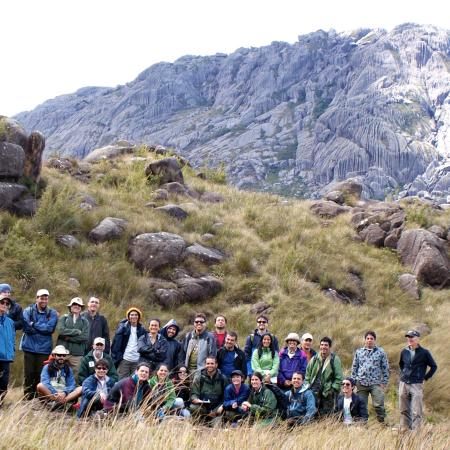
Brazil did its first report of economic contribuitions of visitors expenditures in federal protected areas in 2017. Park managers are getting really excited with this kind of data. They understand that economic analysis is an important tool to demonstrate proteced are values for the general public that is not interested in conservation.
In a moment, where the country face a economic recession, economic analysis of turism is a way to inform stakeholders of the value of PAs in serving not just conservation purposes, but as engines for relatively low-impact, high added-value economic growth, presenting how many jobs, income and GDP is generated.
The results are now being used in presentations of park managers and directors, by journalists and other stakeholders that advocate in favor of conservation. The statement that each dollar invested in the protected area system produced $7 in economic benefits became a mantra for the agency staff.

